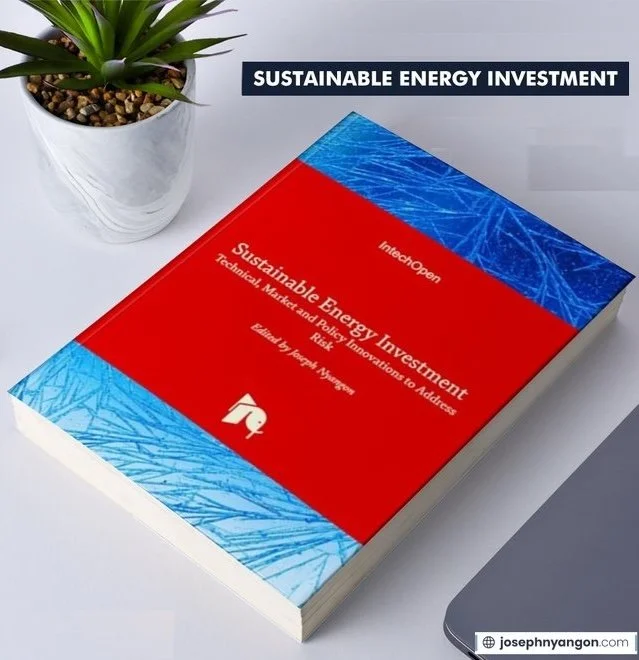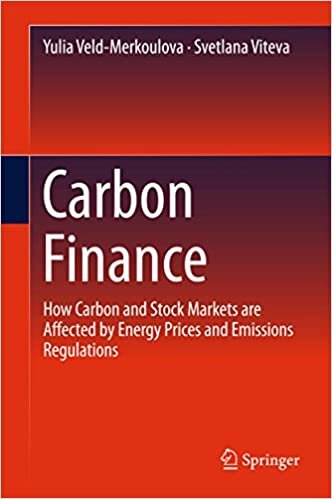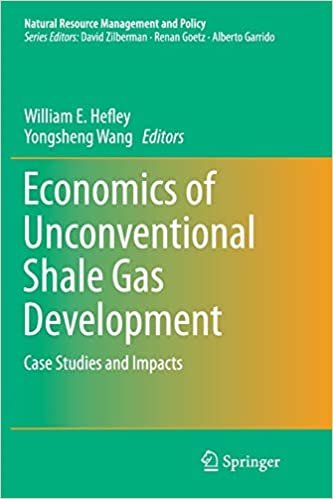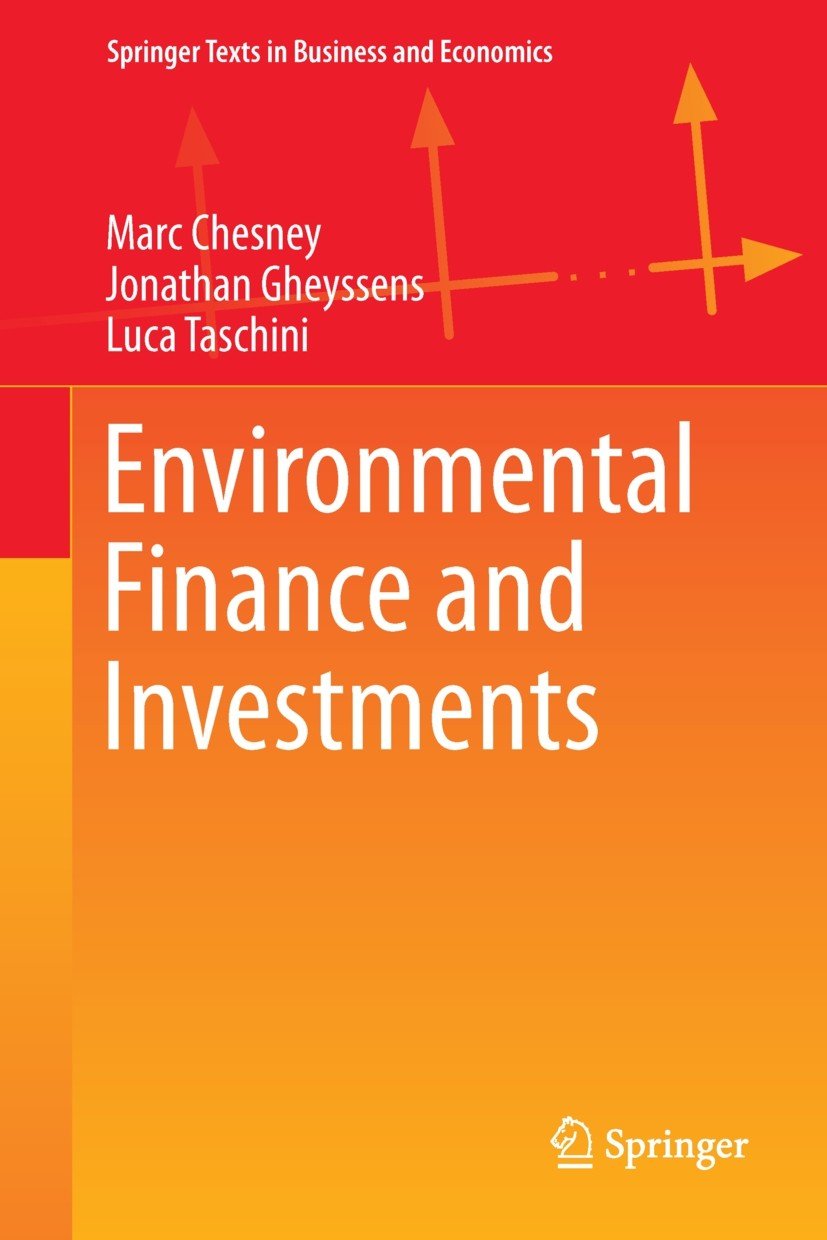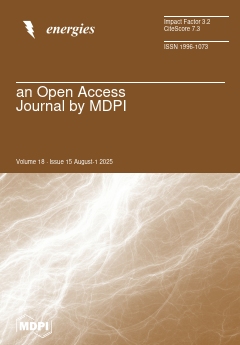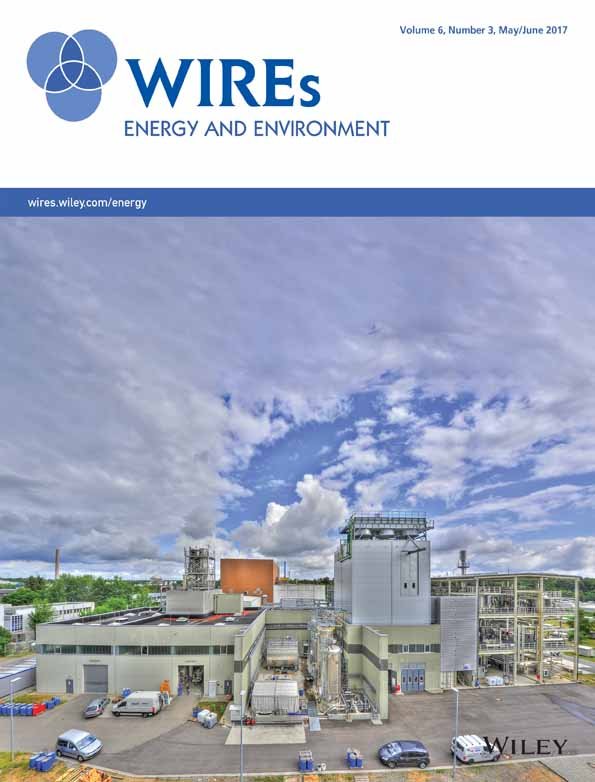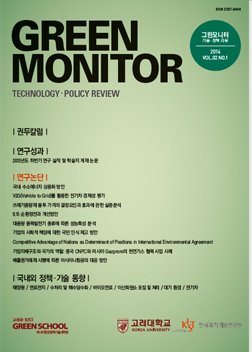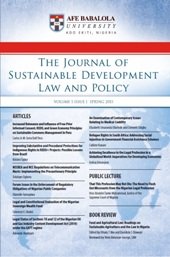
Publications in Electricity Market Design, Energy Economics ANd Engineering,and Regulatory Policy
Nyangon, J. (2026). Contested Temporalities of Critical Minerals and Resource Extraction for Electric Vehicles. In Graham Davis (ed.), Handbook on Inequality and Natural Resources, Edward Elgar, 2025 (forthcoming).
The increasing demand for critical minerals like cobalt and lithium, driven by electric vehicle (EV) manufacturing, presents a paradox between rapid industrial expansion and long-term sustainability. The concentration of extraction in regions such as the Democratic Republic of Congo (DRC), Chile, and Argentina has led to significant socio-environmental challenges, including ecosystem degradation, labour exploitation, and the displacement of Indigenous communities. In the DRC, cobalt mining is often linked to child labour and hazardous working conditions, while lithium extraction in Chile intensifies water scarcity, threatening local agriculture and biodiversity. The urgency to secure these resources, reinforced by regulatory measures like the U.S. Inflation Reduction Act (IRA), aims to promote ethical sourcing, yet the extraction-driven approach often exacerbates global inequalities. This chapter critically examines these contested temporalities, where the immediate economic incentives of resource extraction conflict with long-term environmental and social objectives. By advocating for community-centred governance, sustainable mining, and circular economy strategies—including recycling and material substitution—it proposes a place-based framework to balance resource security with equity, ensuring that the transition to EVs does not perpetuate the very injustices it seeks to mitigate.
Keywords: Critical minerals; Electric vehicles; Sustainable mining; Circular economy; Ethical sourcing; Community governance
Nyangon, J. and Byrne, J. (2021) (Eds). Sustainable Energy Investment: Technical, Market and Policy Innovations to Address Risk. IntechOpen, London. ISBN: 978-1-83880-198-4. Pp. 260. DOI: 10.5772/intechopen.86093.
Financial markets have the capacity to advance net-zero emission objectives and catalyze the transition to a clean energy economy by channeling capital into climate-resilient technologies, enhancing energy efficiency, and driving the digital transformation of enterprises.
This book examines the technical, market, and policy innovations for unlocking sustainable investment in the energy sector. While finalizing this book, the COVID-19 pandemic is cutting a devastating swath through the global economy, causing the biggest fall in energy sector investment, exacerbating the global trade finance gap, worsening signs of growing income inequality, and devastating the health and livelihoods of millions. What is the parallel between the COVID-19 pandemic and the climate change crisis? The impacts of the global pandemic are expected to last for a few years, whereas those associated with the climate crisis will play out over several decades with potentially irreversible consequences. However, both show that the cost of inaction or delay in addressing the risks can lead to devastating outcomes or a greater probability of irreversible, catastrophic damages. In the context of sustainable energy investment and the transition to a low-carbon, climate-resilient economy, what ways can financial markets and institutions support net-zero-emission activities and the shift to a sustainable economy, including investment in energy efficiency, low-carbon and renewable energy technologies? This book provides students, policymakers, and energy investment professionals with the knowledge and theoretical tools necessary to address related questions in sustainable energy investment, risk management, and energy innovation agendas.
Nyangon, J. (2021). Smart Energy Frameworks for Smart Cities: The Need for Polycentrism. In J. C. Augusto (Ed.), In Handbook of Smart Cities. London, UK: Springer.
Energy systems and utility business models are evolving in parallel across multiple cities, shaped by diverse institutional contexts, urban planning priorities, and customer preferences. Leveraging polycentric insights is essential to navigate these simultaneous transformations effectively.
Rapid growth in megacities has prompted deep transformations intended to change sociotechnical systems, deep social and institutional practices, and scientific inquiries to better understand energy and material flows of cities. Typically, these processes are defined by sociotechnical experimentation and purposive re-shaping of the synergies between jurisdictions, sectors, and technical solutions required to optimize resource management and improve institutional diversity and its configurations. This chapter studies features of smart energy frameworks for smart cities leadership in an attempt to ignite transformations in energy business models for sustainability systems from the bottom up. Following this polycentric approach, the chapter documents seven emerging models for smart city energy governance, namely distributed energy resources development, energy storage, microgrids, demand response and energy management systems, smart measuring systems, energy harvesting, and green technology innovations. One observation is that while Singapore and Shanghai are a product of advanced polycentric strategic planning, the urban developments around the greater Jakarta area is an outcome of gradual alignments and reconfigurations of urban design toward the polycentric goal. In addition, energy systems and utility business models are changing simultaneously in several cities with respect to institutional contexts, urban planning, and customer choice. A key message of this chapter is that capturing the impacts of these urban transformation across the quartiles of energy resource development, technological progress, and policy stringency requires the design and implementation processes that simultaneously promotes polycentric authority and contributes to informed understanding of the scale and consequences of these transitions.
Nyangon, J. (2021). Tackling the Risk of Stranded Electricity Assets with Machine Learning and Artificial Intelligence. In Nyangon, J. and Byrne, J. (Eds), Sustainable Energy Investment: Technical, Market and Policy Innovations to Address Risk. IntechOpen, London. DOI: 10.5772/intechopen.93488.
Given the vital role of the energy sector and its interrelation with the rest of the economy, using ML and AI to tackle stranded electricity assets is a cost-effective derisking strategy.
The Paris Agreement on climate change requires nations to keep the global temperature within the 2°C carbon budget. Achieving this temperature target means stranding more than 80% of all proven fossil energy reserves as well as resulting in investments in such resources becoming stranded assets. At the implementation level, governments are experiencing technical, economic, and legal challenges in transitioning their economies to meet the 2°C temperature commitment through the nationally determined contributions (NDCs), let alone striving for the 1.5°C carbon budget, which translates into greenhouse gas emissions (GHG) gap. This chapter focuses on tackling the risks of stranded electricity assets using machine learning and artificial intelligence technologies. Stranded assets are not new in the energy sector; the physical impacts of climate change and the transition to a low-carbon economy have generally rendered redundant or obsolete electricity generation and storage assets. Low-carbon electricity systems, which come in variable and controllable forms, are essential to mitigating climate change. These systems present distinct opportunities for machine learning and artificial intelligence-powered techniques. This chapter considers the background to these issues. It discusses the asset stranding discourse and its implications to the energy sector and related infrastructure. The chapter concludes by outlining an interdisciplinary research agenda for mitigating the risks of stranded assets in electricity investments.
Nyangon, J. and Byrne, J. (2021). Introductory Chapter: Sustainable Energy Investment and the Transition to Renewable Energy-Powered Futures. In Nyangon, J. and Byrne, J. (Eds), Sustainable Energy Investment: Technical, Market and Policy Innovations to Address Risk. IntechOpen, London. DOI: 10.5772/intechopen.94320.
Mainstreaming renewable-powered energy investment into business decision-making and risk pricing is an attractive climate-smart solution that societies and economies can adopt immediately to help overcome anachronistic electric power regimes and regional development dynamics. Globally, investments in distributed, renewable energy-powered futures keep accelerating with clear upward trends in worldwide power generation expansion and risk management at the forefront. Nevertheless, finding a low-carbon, risk pricing formula is not easy. Despite compelling arguments for investment in low-carbon technologies and applications, such as small-scale renewables and locally distributed green energy, digitalization, advanced batteries or carbon capture and storage (CCS), these interventions require a pragmatic assessment of their financeability, which in turn hinges on their technical and economic potential with respect to complex factors, including social equity, feasibility, socioeconomic impact, and climate impact. The scale of deploying these low-carbon technologies is also an important consideration to investors because project size is a critical determinant of the cost of unit returns. Some institutional investors consider small-scale investments less attractive due to their perceived low rate of returns.
Nyangon, J. and Byrne, J. (2018). Diversifying Electricity Customer Choice: REVing Up the New York Energy Vision for Polycentric Innovation. In Pavel V. Tsvetkov (Ed.), Energy Systems and Environment, IntechOpen, London, UK.
New York Independent System Operator (NYSO) Market participants
Electric utility business models are changing to integrate new technologies and distributed energy resources (DER). Diversifying energy mix and customer choices are both novel and useful in understanding key drivers of this transformation, including distribution system planning and customer-service options. Practical implementation of these solutions, however, shows that without proper planning, energy diversification could come at very high social and economic costs. For example, regulators have been slow in implementing policy, regulatory, and business model constructs that promote customer choice to animate high levels of grid reliability and resiliency. Equally important is how viable existing utility business models are to navigating transformation processes, including strategic resource management, revenue model, customer interface, and value propositions. This chapter discusses our use of the Hamel business model to offer strategic analysis of Reforming the Energy Vision (REV), which is aimed at decarbonizing New York’s energy sector and increasing customer choice and control. Specifically, we build from existing literature to argue that implementing distribution management systems (DMS) in which customer choice and DERs are prominent requires a shared or ‘polycentric,’ networked business-model innovations that build on competitive and comparative advantages of existing institutions to meet the growing demand for electricity services and utility strategic goals.
Utility business models shape industry transitions by driving strategic resource allocation, revenue structures, customer engagement, and value creation, making them critical for adapting to shifting energy prices, carbon market dynamics, and evolving emissions regulations.
Nyangon, J. “Book Review: Veld-Merkoulova, Y. and Viteva, S. (Eds.) (2017). Carbon Finance: How Carbon and Stock Markets Are Affected by Energy Prices and Emissions Regulations.” Energy Journal. Vol. 38(4).
Electric utility business models are changing to integrate new technologies and distributed energy resources (DER). Diversifying energy mix and customer choices are both novel and useful in understanding key drivers of this transformation, including distribution system planning and customer-service options. Practical implementation of these solutions, however, shows that without proper planning, energy diversification could come at very high social and economic costs. For example, regulators have been slow in implementing policy, regulatory, and business model constructs that promote customer choice to animate high levels of grid reliability and resiliency. Equally important is how viable existing utility business models are to navigating transformation processes, including strategic resource management, revenue model, customer interface, and value propositions. This chapter discusses our use of the Hamel business model to offer strategic analysis of Reforming the Energy Vision (REV), which is aimed at decarbonizing New York’s energy sector and increasing customer choice and control. Specifically, we build from existing literature to argue that implementing distribution management systems (DMS) in which customer choice and DERs are prominent requires a shared or ‘polycentric,’ networked business-model innovations that build on competitive and comparative advantages of existing institutions to meet the growing demand for electricity services and utility strategic goals.
Taminiau, J., Nyangon, J., Lewis, A.S., and Byrne, J. (2017). Sustainable Business Model Innovation: Using Polycentric and Creative Climate Change Governance. In Ziska Fields (Ed.), Collective Creativity for Responsible and Sustainable Business Practice (pp. 140-159). Hershey, PA: IGI Global. DOI:10.4018/978-1-5225-1823-5.
Establishing a sustainable energy future can justifiably be considered the next frontier in global sustainable development under the agenda laid out in the Sustainable Development Goals (SDGs). The newly adopted Paris Agreement which seeks to hold global average temperature increase to “well below 2°C” above pre-industrial levels inserts additional urgency into this agenda. To realize the commitments out-lined in the agreement, implementation of innovative sustainable business models capable of producing strong mitigation and adaptation outcomes is required ‘on the ground’ and needs to be available for subsequent diffusion across different countries, contexts and domains. This chapter explores the value of polycentric climate change governance through an investigation of sustainable business model innovation. An example of a sustainable business model, called the Sustainable Energy Utility (SEU), is evaluated and an assessment of United Nations-based programming to aid future diffusion of such business models is conducted.
Nyangon, J., Alabbas, N.H., and Agbemabiese, L. (2017). Entangled Systems at the Energy-Water-Food Nexus: Challenges and Opportunities. In Rao, P. and Patil, Y. (Eds.), Reconsidering the Impact of Climate Change on Global Water Supply, Use, and Management (pp. 144-165). Hershey, PA: IGI Global. DOI:10.4018/978-1-5225-1046-8.
This chapter assesses energy, water, and food resource systems based on their inter- and intra-sectoral imperatives of large scale development investments at the institutional level (including private and public activities) and how to achieve security of resource supplies. It identifies key interrelated processes, practices, and factors that underpin integrated resource management (IRM) and their attendant benefits. Applying the E4 framework concerned with energy, economy, environment, and equity to identify the main threats to these systems, the chapter evaluates their institutional, political, economic, cultural and behavioral components, and characterizes the forces that drive each of them at different governance scales. The chapter is guided by political economy, economic, and sociological theories that suggest that institutional structures affect economic factors and processes (i.e. production, distribution, and consumption processes). A case study of energy, water, and food (EWF) conflicting sectoral imperatives in Delaware is discussed in detail to better understand how these policy and institutional processes occur, which forms they take, and in which ways they define the quality and quantity of EWF resource systems in the State. In order to verify these parameters, the analysis considered the advantages of a sectorally balanced, E4 framework, in particular to evaluate the valency and magnitude of cross-sectoral connections, balance competing needs, and identify policy options that address various trade-offs.
Nyangon, J. “Book Review: Hefley, W.E. and Wang, Y. (Eds.) (2015). Economics of Unconventional Shale Gas Development: Case Studies and Impacts.” Energy Journal. Vol. 37(4) October 2015. ISSN 0195-6574.
Unconventional shale gas development in the Marcellus and Utica Shales holds the potential to fundamentally reshape North America’s energy landscape, redefining how the region is fueled in the decades ahead.
Policymakers maintain that the dramatic transformation in the U.S. shale industry ranks as the most significant energy innovation so far this century. Indeed, the economics and related impacts of unconventional shale gas development have the potential, to cause a paradigm shift in the fueling of North America’s energy future. Increased drilling in the Marcellus and Utica shales in the Mid-Atlantic region and promising oil plays in the Niobrara shale formation have made the U.S. a net producer of natural gas and contributed to local economic gains.
This important book is the first volume to focus solely on the economics and related financial impacts of unconventional shale gas development in the United States. The editors are William E. Hefley at the University of Pittsburgh and Yongsheng Wang, at Washington and Jefferson College. While focusing mainly on the Marcellus and Utica Shales in the Mid-Atlantic region, the purpose of the book is to review, synthesize and discuss the development of the U.S. shale energy industry using a wide range of research from multiple levels of analysis, i.e. single wells to entire states and additional insights from other regions, in order to provide a broader view of these issues. It addresses, in particular, the impact of increased exploitation of natural gas reserves on local communities, states, and sectors, and the environmental concerns from an economic perspective. The analyses and proposals put forward by the authors should be considered constructive inputs to fill the research gap on this pressing issue.
Nyangon, J. “Book Review: Chesney, M., Gheyssens, J., Pana, A.C., Taschini, L., (2016). Environmental Finance and Investments.” Financial Analysts Journal. Vol. 72(4) 2016.
Environmental finance spans markets, regulations, business models, and infrastructure, encompassing energy, water, waste, and grids. Environmental Finance and Investments analyzes carbon markets through finance, economics, and environmental science, integrating macroeconomics, commodities, and project investments.
The authors analyze environmental commodity markets and how they can attract investments, focusing on the application of market-based instruments to incentivize the behavior and change needed to deliver environmental quality and mitigate environmental risk. This book can be read linearly, chapter by chapter, or it can be used by fund managers, regulatory investors, and green-finance experts as a reference to gain valuable insights into how to manage carbon markets. Environmental finance touches almost every aspect of markets, business models, regulations, public finance, and infrastructure development. It includes energy, waste and water systems, electric grids, and urban infrastructure. Although some thoughtful regulatory tools and policies have been identified at local and state levels in the United States (Steven Cohen, William Eimicke, and Alison Miller’s “policy levers for sustainability”1 come to mind), no clear national energy policy exists and there are practically no green taxes. Instead, other market tools—including tax credits, loan guarantees, and subsidies (e.g., rebates)—are being used at the federal level to incentivize investment in a sustainable, renewable resource–based economy. In light of the threats to economic growth and the challenge of catalyzing sustainable investments in asset-intensive industries, realizing business model innovation for climate-friendly development appears ambitious regardless of the size of the economy.
In Environmental Finance and Investments, Marc Chesney, Jonathan Gheyssens, Anca Claudia Pana, and Luca Taschini analyze environmental commodity markets and how they can attract investments. The authors do not focus on climate economics or sustainability management but, rather, offer an assessment of carbon markets, drawing from many fields in finance, economics, and environmental science, including macroeconomics, commodity markets, project finance, and investments. Accordingly, the authors focus on the application of market-based instruments to incentivize the behavior and change needed to deliver environmental quality and mitigate environmental risk. More generally, they investigate the trade-offs among production, technological changes, and pollution in the context of environmental finance theory, which is a new research strand “that investigates the economic, financial, and managerial impacts of carbon pricing policies.”
Article Highlights
Nyangon, J. Physics Informed Neural Networks for Maritime Energy Systems and Blue Economy Innovations. Machine Learning: Earth. 2025. https://doi.org/10.1088/3049-4753/adfe73. [PDF]
Abstract: Sustainable development in the blue economy demands innovative approaches to address marine challenges such as energy services, climate change, overfishing, and pollution. This paper reviews Physics-Informed Artificial Intelligence (AI) and Machine Learning (ML) techniques, focusing on Physics-Informed Neural Networks (PINNs) methods and their transformative application to maritime systems. PINNs integrate physical laws directly into data-driven models, ensuring that simulations adhere to fundamental principles while assimilating real-world data. The study reviews how these advanced methods have been adapted, from fields such as energy, healthcare, and aerospace, for blue economy applications such as modeling ocean currents, optimizing marine renewable energy systems, and forecasting coastal hazards. The paper explores how PINN-based approaches can enhance decision-making in sustainable fisheries management, harmful algal bloom detection, coral reef health monitoring, marine debris and plastic pollution identification, fish stock and biodiversity assessment, and oil spill and anomaly detection. By bridging empirical data with the governing equations of marine ecosystems, physics-based techniques provide scalable, high-fidelity solutions that empower policymakers and industry leaders to make informed decisions. Ultimately, this study assesses the potential of physics-informed AI/ML (PIAI/PIML)—especially PINNs—to drive transformative progress in the blue economy, by promoting sustainable use of marine resources and resilient coastal management.
Keywords: Blue economy, Maritime systems, Physics-Informed Neural Networks (PINNs), Partial differential equations, Machine learning, Artificial Intelligence, Neural network architectures
Description: Parallel PINN architecture employing Fourier embedding and AD for accurate ocean gravity wave simulation. The Figure illustrates a dual-network PINN framework, where parallel neural networks approximate velocity potential and surface elevation. Normalized inputs undergo Fourier embedding and automatic differentiation computes loss components, including Laplace residuals and boundary conditions, ensuring accurate ocean gravity wave simulation, adapted from Ehlers et al. (2025).
Nyangon, J. Smart Grid Strategies for Tackling the Duck Curve: A Qualitative Assessment of Digitalization, Battery Energy Storage, and Managed Rebound Effects Benefits. Energies. 2025, 18 (15), 3988. https://doi.org/10.3390/en18153988. [Link]
Abstract: Modern utilities face unprecedented pressures as trends in digital transformation and democratized energy choice empower consumers to engage in peak shaving, flexible load management, and adopt grid automation and intelligence solutions. A powerful con-fluence of architectural, technological, and socio-economic forces is transforming the U.S. electricity market, triggering significant changes in electricity production, transmission, and consumption. Utilities are embracing digital twins and repurposed Utility 2.0 con-cepts—distributed energy resources, microgrids, innovative electricity market designs, real-time automated monitoring, smart meters, machine learning, artificial intelligence, and advanced data and predictive analytics—to foster operational flexibility and market efficiency. This analysis qualitatively evaluates how digitalization, Battery Energy Storage Systems (BESSs), and adaptive strategies to mitigate rebound effects collectively advance smart duck curve management. By leveraging digital platforms for real-time monitoring and predictive analytics, utilities can optimize energy flows and make da-ta-driven decisions. BESS technologies capture surplus renewable energy during off-peak periods and discharge it when demand spikes, thereby smoothing grid fluctuations. This review explores the benefits of targeted digital transformation, BESSs, and managed rebound effects in mitigating the duck curve problem, ensuring that energy efficiency gains translate into actual savings. Furthermore, this integrated approach not only re-duces energy wastage and lowers operational costs but also enhances grid resilience, establishing a robust framework for sustainable energy management in an evolving market landscape.
Keywords: Duck curve; digitalization; Battery Energy Storage Systems (BESSs); rebound effects; smart grids
Schaeffer, R., Schipper, E. L. F., Ospina, D., Mirazo, P., Alencar, A., Anvari, M., Artaxo, P., Biresselioglu, M. E., Blome, T., Boeckmann, M., Brink, E., Broadgate, W., Bustamante, M., Cai, W., Canadell, J. G., Cardinale, R., Chidichimo, M. P., Ditlevsen, P., Eicker, U., Feron, S., Fikru, M. G., Fuss, S., Gaye, A. T., Gustafsson, Ö., Harring, N., He, C., Hebden, S., Heilemann, A., Hirota, M., Janardhanan, N., Juhola, S., Jung, T. Y., Kejun, J., Kilkiș, Ş., Kumarasinghe, N., Lapola, D., Lee, J.-Y., Levis, C., Lusambili, A., Maasakkers, J. D., MacIntosh, C., Mahmood, J., Mankin, J. S., Marchegiani, P., Martin, M., Mukherji, A., Muñoz-Erickson, T. A., Niazi, Z., Nyangon, J., Pandipati, S., Perera, A. T. D., Persad, G., Persson, Å., Redman, A., Riipinen, I., Rockström, J., Roffe, S., Roy, J., Sakschewski, B., Samset, B. H., Schlosser, P., Sharifi, A., Shih, W.-Y., Sioen, G. B., Sokona, Y., Stammer, D., Suk, S., Thiam, D., Thompson, V., Tullos, E., van Westen, R. M., Vargas Falla, A. M., Vecellio, D. J., Worden, J., Wu, H. C., Xu, C., Yang, Y., Zachariah, M., Zhang, Z., & Ziervogel, G. Ten new insights in climate science 2024. One Earth. 2025, ISSN 2590-3322, https://doi.org/10.1016/j.oneear.2025.101285. [Link]
Abstract: The years 2023 and 2024 were characterized by unprecedented warming across the globe, underscoring the urgency of climate action. Robust science advice for decision makers on subjects as complex as climate change requires deep cross- and interdisciplinary understanding. However, navigating the ever-expanding and diverse peer-reviewed literature on climate change is enormously challenging for individual researchers. We elicited expert input through an online questionnaire (188 respondents from 45 countries) and prioritized 10 key advances in climate-change research with high policy relevance. The insights span a wide range of areas, from changes in methane and aerosol emissions to the factors shaping citizens’ acceptance of climate policies. This synthesis and communications effort forms the basis for a science-policy report distributed to party delegations ahead of the 29th session of the Conference of the Parties (COP29) to inform their positions and arguments on critical issues, including heat-adaptation planning, comprehensive mitigation strategies, and strengthened governance in energy-transition minerals value chains.
Keywords: Climate science; science policy; just transition; mitigation; adaptation; resilience; governance; climate policy
Nyangon, J. (2024). Advancements in Hydrogen Energy Systems: A Review of Levelized Costs, Financial Incentives and Technological Innovations. Innovation and Green Development. [Link]
Abstract: Hydrogen energy systems (HES) are increasingly recognized as pivotal in cutting global carbon dioxide (CO2) emissions, especially in transportation, power generation, and industrial sectors. This paper offers a comprehensive review of HES, emphasizing their diverse applications and economic viability. By 2030, hydrogen energy is expected to revolutionize various sectors, significantly impacting CO2 abatement and energy demand. In electricity and power generation, hydrogen could reduce CO2 emissions by 50–100 million tons annually, requiring 10–20 million tons of hydrogen and an investment of $50–100 billion, underscoring its role in grid stabilization. Additionally, in the heating sector, hydrogen could facilitate a CO2 abatement of 30–50 million tons. We examine the levelized cost of hydrogen (LCOH) production, influenced by factors like production methods, efficiency, and infrastructure. While steam methane reforming is cost-effective, it poses a larger environmental impact compared to electrolysis. The global life-cycle cost of hydrogen production decreases as production scales up, with current costs ranging from $1–3 per kg for fossil-based sources to $3.4–7.5 per kg for electrolysis using low-emission electricity. These costs are projected to decrease, especially for electrolytic hydrogen in regions with abundant solar energy. However, despite the technical feasibility of decarbonization, high production costs still pose challenges. A systematic and effective transition to a hydrogen economy requires comprehensive policy and financial support mechanisms, including incentives, subsidies, tax measures, and funding for research and development of pilot projects. Additionally, the paper discusses hydrogen's role in advanced storage technologies such as hydrides and Japan's ENE-FARM solution for residential energy, emphasizing the need for strategic investments across the hydrogen value chain to enhance HES competitiveness, reduce LCOH, and advance the learning rates of hydrogen production technologies.
Keywords: Hydrogen energy systems, Hydrogen production, Electrolyzer, Power system, Hydrogen applications, Fuel cell technology, Levelized cost of hydrogen
Forecasted U.S. hydrogen demand (million tons). Source: Lazard
Nyangon, J. (2024). Climate-Proofing Critical Energy Infrastructure: Smart Grids, Artificial Intelligence, and Machine Learning for Power System Resilience Against Extreme Weather Events. ASCE: Journal of Infrastructure Systems. [Link]
Abstract: Electrical power systems face heightened risks from climate change, on top of existing challenges like aging infrastructure, regulatory shifts, and cybersecurity threats. This paper explores how advanced technologies, including smart grids, artificial intelligence (AI), and machine learning, (ML) can enhance the resilience of power systems against climate-driven extreme weather events. Drawing insights from resilience theory, the paper presents a state-of-the-art review of grid resilience literature from the point of view of grid resilience literature, emphasizing the escalating vulnerabilities of energy systems to severe weather. Although utilities currently utilize technologies like automated meter reading and advanced metering infrastructure to collect vital grid performance data, the lack of strategic collaboration often impedes effective data governance and sharing, thus undermining efficient responses to climate threats. The paper underscores the significance of distributed energy resources, long-duration energy storage, microgrids, and demand-side management. It further illustrates how AI and ML can optimize smart grids to support these strategies. Proactive integration of smart grids with advanced technologies could significantly reduce climate-related costs compared to non-adaptive methods. Such proactive grid resilience strategies not only climate-proof energy infrastructure against climatic changes but also herald a modern industrial transformation.
Keywords: Climate change; Power system resilience; Smart grids; Artificial intelligence; Machine learning; Energy infrastructure; Extreme weather events
Conceptual resilience trapezoid and curve for with an event
Nyangon, J. and Akintunde, R. (2024). Principal component analysis of day-ahead electricity price forecasting in CAISO and its implications for highly integrated renewable energy markets. WIREs Energy & Environment. [Link]
Abstract: Electricity price forecasting is crucial for grid management, renewable energy integration, power system planning, and price volatility management. However, poor accuracy due to complex generation mix data and heteroskedasticity poses a challenge for utilities and grid operators. This paper evaluates advanced analytics methods that utilize principal component analysis (PCA) to improve forecasting accuracy amidst heteroskedastic noise. Drawing on the experience of the California Independent System Operator (CAISO), a leading producer of renewable electricity, the study analyzes hourly electricity prices and demand data from 2016 to 2021 to assess the impact of day-ahead forecasting on California's evolving generation mix. To enhance data quality, traditional outlier analysis using the interquartile range (IQR) method is first applied, followed by a novel supervised PCA technique called robust PCA (RPCA) for more effective outlier detection and elimination. The combined approach significantly improves data symmetry and reduces skewness. Multiple linear regression models are then constructed to forecast electricity prices using both raw and transformed features obtained through PCA. Results demonstrate that the model utilizing transformed features, after outlier removal using the traditional method and SAS Sparse Matrix method, achieves the highest forecasting performance. Notably, the SAS Sparse Matrix outlier removal method, implemented via proc RPCA, greatly contributes to improved model accuracy. This study highlights that PCA methods enhance electricity price forecasting accuracy, facilitating the integration of renewables like solar and wind, thereby aiding grid management and promoting renewable growth in day-ahead markets.
Keywords: California Independent System Operator (CAISO); Electricity price forecasting; Heteroskedasticity; Power system planning; Principal component analysis (PCA); Renewable energy integration; Variable renewable sources
Comparative analysis of outlier removal in electricity price forecasting. This graphical abstract illustrates the effectiveness of Sparse Matrix strategy in outlier detection and removal. It displays boxplots generated using traditional PCA, which focuses on reducing matrix dimensionality without explicit outlier segregation as well as the results of applying the SAS Sparse Matrix strategy, a variant of Robust PCA (RPCA). This method decomposes the data matrix into a low-rank matrix representing 'normal' variables and a sparse matrix identifying 'outlier' variables. The highlighted areas in the sparse matrix boxplots indicate the successful isolation and removal of outlier values (nonzero values) in the electricity price variable, demonstrating the enhanced accuracy of the SAS Sparse Matrix strategy in outlier management for more accurate day-ahead electricity price forecasting in highly integrated renewable energy markets.
Nyangon, J. and Byrne, J. (2023). Estimating the impacts of natural gas power generation growth on solar electricity development: PJM's evolving resource mix and ramping capability. WIREs Energy & Environment. Vol. 12, Issue 1. [Link]
Abstract: Expansion of distributed solar photovoltaic (PV) and natural gas-fired generation capacity in the United States has put a renewed spotlight on methods and tools for power system planning and grid modernization. This article investigates the impact of increasing natural gas-fired electricity generation assets on installed distributed solar PV systems in the Pennsylvania–New Jersey–Maryland (PJM) Interconnection in the United States over the period 2008–2018. We developed an empirical dynamic panel data model using the system-generalized method of moments (system-GMM) estimation approach. The model accounts for the impact of past and current technical, market and policy changes over time, forecasting errors, and business cycles by controlling for PJM jurisdictions-level effects and year fixed effects. Using an instrumental variable to control for endogeneity, we concluded that natural gas does not crowd out renewables like solar PV in the PJM capacity market; however, we also found considerable heterogeneity. Such heterogeneity was displayed in the relationship between solar PV systems and electricity prices. More interestingly, we found no evidence suggesting any relationship between distributed solar PV development and nuclear, coal, hydro, or electricity consumption. In addition, considering policy effects of state renewable portfolio standards, net energy metering, differences in the PJM market structure, and other demand and cost-related factors proved important in assessing their impacts on solar PV generation capacity, including energy storage as a non-wire alternative policy technique.
Keywords: Solar Photovoltaic, Natural gas, Impact estimation, Panel regression, System-GMM
Trends in natural gas-fired and distributed solar photovoltaic (PV) systems in the Pennsylvania–New Jersey–Maryland (PJM) region.
Byrne, J., Taminiau, J., and Nyangon, J. (2022). American Policy Conflict in the Hothouse: Exploring the Politics of Climate Inaction and Polycentric Rebellion. Energy Research & Social Science (ERSS). [Link]
Abstract: In 2021, the United States submitted a national climate plan, signaling the Biden Administration’s intention to return the country to the United Nations Framework Convention on Climate Change (UNFCCC) process. The plan puts the country on course to zero out carbon dioxide (CO2) emissions from its energy sector by mid-century or sooner. In response, the national opposition party quickly declared its intent to prevent the announced plan from being implemented, causing another cycle of American climate policy inaction: cancel politics are practiced by the Republican Party after the Democratic Party attempts to fashion a national compromise. The pattern has been the same for decades leading to the same result: U.S. failure to sustain a national policy. A third party in the conflict – subnational actors (state and local governments in partnership with civil society) – continues to design, enact and enforce policies and has become the owner of actual climate policy achievement in the U.S. This paper argues that the conflict has entered another stage of national gridlock in which hopeful policy makers desperately plead for cooperation, while policy deniers pursue policy destruction and preemption. In response to this ‘hothouse’ conflict in which partisan national politics ignores overwhelming evidence of human impact in the global greenhouse, an American “polycentric” strategy has emerged and is building an institutional fabric based on principles of social justice and moral responsibility, and tasking policies and economics to meet these aims. We offer a theory of American climate policy conflict, supported by empirical findings, that depicts a polycentric movement installing new governance paradigms and delivering a politics and economics of transformation in U.S. energy-climate-society relations.
Keywords: climate change; policy conflict; polycentricism; U.S. climate policy; policy diffusion; polycentricity.
Nyangon, J. and Byrne, J. (2021). Spatial Energy Efficiency Patterns in New York and Implications for Energy Demand and the Rebound Effect. Energy Sources, Part B: Economics, Planning, and Policy, 16:2, 135-161. [Link]
Abstract: This study uses a spatial Durbin error model (SDEM) approach to analyze adoption trends for residential energy-efficiency measures (EEMs) in New York state. Model results are based on socioeconomic, building, and household demographic characteristics during the 2012–2016 period. Our study’s results confirm that a positive correlation exists between EEM uptake and multifamily buildings, gas-heated homes, education effects, and spatial spillover effects among neighboring ZIP codes. The results show that building attributes hold a relatively high explanatory power over EEM adoption compared with socioeconomic characteristics. Our results show that energy-efficiency policies can create positive and significant neighborly effects in promoting EEM adoption. The developed SDEM methodological framework provides useful insights in identifying energy-efficiency opportunities that exist in rural, suburban, and urban communities, highlighting the need to review policy incentives periodically to address underlying changes in the built environment and spatial disparities in energy-efficiency investments.
Keywords: Energy Efficiency; Spatial Spillover Effects; Spatial Durbin Modeling; Neighborly Emulation; Rebound Effects; New York; Energy-efficiency Measures
Nyangon, J., Byrne, J., and Taminiau, J. (2017). An assessment of price convergence between natural gas and solar photovoltaic in the U.S. electricity market. WIREs Energy & Environment. Vol. 6, Issue 3. [Link]
Abstract: The U.S. shale boom has exerted downward pressure on natural gas prices nationally, widened oil-to-gas price spreads, and accelerated coal-to-gas fuel substitution. One concern is the impact of the rising production of shale gas on further development of a domestic solar photovoltaic (PV) market. Specifically, will lower natural gas prices slow or even reverse the current rapid growth in the solar market? Using the Phillips–Sul convergence test, this paper investigates whether the levelized cost of energy (LCOE) of solar PV and natural gas electricity generation in the United States have converged. Using weekly Henry Hub-linked natural gas spot prices and utility PV system prices from 2010 to 2015, empirical tests for convergence are applied to examine the extent of spot market integration and the speed with which market forces move the two energy prices toward equilibrium. The paper also assesses the link between the MAC Solar Energy Index (SUNIDX) and the S&P GSCI natural gas index spot prices for evidence of market integration during 2007–2015. We conclude that PV and natural gas prices are not converging, and the two markets are not integrated nationally, but some level of integration could exist at regional and state levels that will need to be tested in future research. We also conclude that complementary use of the technologies is likely; while price convergence is not likely to occur soon, distinctive complementary benefits of each resource compared to each other (e.g., fast-start capabilities for gas and low price volatility for PV) will offer opportunities that expand market demand for both.
Keywords: Photovoltaic, Solar Market, Natural Gas, Market Integration, LCOE, Shale Gas, Price Convergence
Nyangon, J. (2015). The U.S. Shale Gas Revolution and its Implications for International Energy Policy. Green Monitor: Technology & Policy Review, Korea University. Vol.3. No. 2. ISSN 2287-9404. [Link]
Abstract: The shale gas revolution has fundamentally transformed energy markets domestically and abroad. Rising production has led to falling gas and oil prices in the U.S., while Europe, in contrast, is paying four to five times more for its natural gas and becoming one of the biggest importers of U.S. coal. As recently as five or six years ago this turnabout seemed improbable, with many analysts calling for rapid growth in renewable energy investment as the best means by which to wean the nation from its dependence on imported oil. Even then, such investment seemed far-fetched as the liquidity crisis worsened during the 2008-2012 global recession, forcing the federal government to institute stringent fiscal and monetary stimulus to stabilize the financial market and institutions. Taken together, the shale gas revolution represents the maturation of industry-friendly policies started under President Bush and continued during the Obama Administration. These policies supported the introduction of advanced technologies such as hydraulic fracturing, tight-oil extraction, horizontal drilling, innovative industrial software and other digital solutions, which have allowed production companies to economically extract oil and gas from previously inaccessible or financially infeasible shale rock formations with breathtaking speed. Most tantalizingly, this is a story of the triumph of a combination of economics of energy (operating by its own rules of supply and demand), the power of government-funded research and development (R&D), and getting the relationship right between the government and private sectors.
Nyangon, J. (2014). International Environmental Governance: Lessons from UNEA and Perspectives on the Post-2015 Era. Journal of Sustainable Development Law and Policy. Volume 4 Issue. 1. [PDF]
Abstract: The inaugural meeting of the United Nations Environment Assembly (UNEA) held in June 2014 in Nairobi, was a culmination of more than four decades of environmental governance since the United Nations Environment Programme (UNEP) was established in 1972 in Stockholm. The meeting addressed weighty and contentious issues including strengthening of UNEP’s role in promoting environmental governance and enhancing science- policy interface. Yet despite the historical significance of the meeting following universalization of the governing body of UNEP and current debates on the post-2015 development agenda, questions persist about the role of UNEP, its establishment, performance, and fragmentation of programmes and secretariats of the multilateral environmental agreements associated with it. This paper reviews the outcome of the inaugural UNEA session, while developing a political economy account of institutional arrangements of international environmental governance to clarify the potential for, and barriers to effective environmental reform. Multilaterally, international environmental governance continues to exhibit elements of complexity, fragmentation, lack of coordination as well as redundancy. In more critical terms, lack of policy integration between environmental regimes is a concern of environmental governance that the new UNEA should address as a matter of priority. Furthermore, incoherent policy objectives in international environmental law often characterised as a governance patchwork have been criticized for their economic orthodoxies that only serve to marginalize and delegitimize alternative modes of environmental governance. In this regard, a core part of UNEA’s institutional legitimacy depends on its success in coevolving to keep up with environmental challenges as they themselves change, as well as enhancing consensus-based stakeholder engagement, perspectives, and participation on environmental governance. This will be its true litmus test on how it responds coherently and effectively to international environmental governance in a post-2015 development world.
Systems and methods for outlier detection and feature transformation in machine learning model training
U.S. Patent No. 12,190,219
Systems and methods for outlier detection and feature transformation in machine learning model training. This invention, co-developed with Dr. Ruth Akintunde, introduces an end-to-end data pre-processing framework that automatically identifies and removes anomalous data points prior to feature transformation, significantly improving model accuracy and stability.
Key Features
Adaptive Outlier Removal: Dynamically filters noise and anomalies based on configurable thresholds, ensuring cleaner training datasets.
Seamless Feature Transformation: Converts sanitized data into machine-ready features using a streamlined pipeline that integrates directly with existing ML platforms.
Enterprise-Scale Architecture: Deployable as a scalable software component capable of handling terabyte-scale datasets with minimal manual tuning.
Enhanced Predictive Reliability: Empirical benchmarks demonstrate up to a 15% reduction in prediction error rates when compared to traditional preprocessing methods.
Industry Impact
Data quality remains a critical barrier for organizations adopting advanced analytics across finance, healthcare, energy and beyond. Machine learning practitioners in these sectors and beyond face persistent challenges from noisy and inconsistent data. This patented technology promises to lower the barrier to entry for organizations seeking to deploy high-fidelity predictive models by automating critical data-cleaning steps. Early implementations are expected to accelerate deployment timelines, reduce data-science resource requirements, and yield more trustworthy insights.
Byrne, J., Taminiau, J., Nyangon, J., Benson, T., Cristinzio, D., and Ddamulira, R. (2021). Community Solar Governance, Institutional Design and Collective Choice Options: Implications for U.S. Markets. Foundation for Renewable Energy and Environment (FREE) and the Center for Energy and Environmental Policy (CEEP), University of Delaware. DOI: 10.2139/ssrn.3914111.
Nyangon, J. (2021). DERs, Grid Resilience and Regulatory Innovation: The Trifecta of Electricity Grid Modernization. SAS Electrifying AI Webinar Presentation. Cary, NC, USA.
Byrne, J., Nyangon, J., Hegedus, S., Taminiau, J., Li, P., de Paz, O., and Redhead, K. (2020). Navigating the Changing Landscape of Community Solar in Delaware: Policy Designs and Governance Frameworks to Support Community-Owned Sustainable Energy. DE: CEEP, University of Delaware. DOI: 10.13140/RG.2.2.35585.68961.
Byrne, J., Nyangon, J., Hegedus, S., Taminiau, J., Li, P., Redhead, K., Paz, O. (2020). “Evaluating City-wide Rooftop Solar PV Potential of Philadelphia & New York Cities” The U.S. National Science Foundation (NSF)/U.S. Department of Energy’s (DOE) Quantum Energy and Sustainable Solar Technologies (QESST), April 6, 2018, Tempe, AZ, USA.
Nyangon, J. (2019). Regulatory Innovation and the Convergence of Electric Utility Policies: New Business Models and Electricity Market Design. 2019 Institute for Operations Research and the Management Sciences (INFORMS) Annual Meeting. Seattle, WA.
Byrne, J., Nyangon, J., Hegedus, S., Chajes, M., Taminiau, J., Ahmed, N., Dinardo, N., Li, P., and Xu, J. (2019). Feasibility Study of City-Scale Solar Power Plants Using Public Buildings: Case Studies of Newark and Wilmington Delaware with Early Investigations of Bifacial Solar Modules and Dual Orientation Racking as Tools for City-Scale Solar Development. Technical report prepared for the Delaware General Assembly. CEEP, University of Delaware. DOI: 10.13140/RG.2.2.22115.40489.
Alabbas, N.H. and Nyangon, J. (2019). Synergy Options Between Gas-fired Electricity Generation and Solar PV in the Power Sector Markets of Gulf Cooperation Council Countries (GCC) and the U.S. USAEE/IAEE Conference Proceeding. Denver, CO. Modeled using PLEXOS Energy Modeling Software.
Agbemabiese, L., Nyangon, J., Lee, Jae-Seung, and Byrne, J. (2017). Enhancing Climate Finance Readiness: A Review of Selected Investment Frameworks as Tools of Multilevel Governance (January 3, 2018). SSRN Online Journal.
Nyangon, J. (2017). Distributed Energy Generation Systems Based on Renewable Energy and Natural Gas Blending: New Business Models for Economic Incentives, Electricity Market Design, and Regulatory Innovation. Ph.D. Dissertation. College of Engineering, University of Delaware. Modeled using PLEXOS Energy Modeling Software.
Byrne, J., Taminiau, J., Garg, M., Nyangon, J., Lin, Y., Roberts, D., and Seo, J. (2017). Automated Monitoring and Verification to Unlock Energy Efficiency Finance: Enhancing Investor Confidence and Customer Trust. Report Prepared for the Delaware General Assembly. University of Delaware.
Nyangon, J., Deblauwe, H., Oster, C., Shin, S., Xu, J., Byrne, J., Taminiau, J., and Chajes, M. (2017). Measuring Urban Sustainability Through Common Indicators and Peer City Benchmarking: Assessing Sustainability Assets for Performance Improvement and Economic and Environmental Progress in Delaware. Report Prepared for the Delaware General Assembly. SSRN Online Journal.
Alabbas, N.H. and Nyangon, J. (2016). Techno-Economic Modeling and Sensitivity Analysis of Costs and Benefits of Renewable Energy Transition. Report Prepared for the United States Association of Energy Economics (USAEE) Case Competition and the King Abdullah Petroleum Studies and Research Center (KAPSARC), 34th North American Conference, Tulsa, Oklahoma, October 24, 2016. Modeled using PLEXOS Energy Modeling Software — Awarded First Prize in Energy Economics & Engineering Systems Modeling.
Alabbas, N.H. and Nyangon, J. (2016). Weather-Based Long-Term Electricity Demand Forecasting Model for Saudi Arabia: A Hybrid Approach Using End-Use and Econometric Methods for Comprehensive Demand Analysis. USAEE/IAEE Conference Proceeding. Tulsa, OK. Modeled using PLEXOS Energy Modeling Software.
Taminiau, J., Nyangon, J., Attia, B., and Shin, S. (2016). Realizing Infrastructure-scale Finance in the Green Bond Market: Scoping Trends. Policy Brief Prepared for Foundation for Renewable Energy and Environment, New York, NY.
Taminiau, J., Nyangon, J., Seo, J., and Lee, J. (2016). Urban Energy Transformation through Solar City Strategies. Policy Brief Prepared for Foundation for Renewable Energy and Environment, New York, NY.
Nyangon, J., and Byrne, J. (2016). Synergies of Renewable Energy and Natural Gas in the U.S. Power Sector: Addressing Regulatory Barriers for a New Energy Future, Research Report. University of Delaware.
Brocks, A., Nyangon, J., and Taminiau, J. (2016). Utility 2.0: A multi-dimensional Review of New York's Reforming the Energy Vision (REV) and Great Britain's RIIO Utility Business Models. SSRN Report Prepared for the Delaware General Assembly. SSRN Online Journal.
Nyangon, J. (2012). Business Value of Long-Term Investment in Green Infrastructure. A briefing note prepared for the investors of Encourage Capital LLC, New York City.
Nyangon, J., Ahn, A., Botlhole, P., Daniel, J. Hamid-Shapiro, L., Kleinman, S., Lecato, A., Mainsah, K., Park, C. Rodriquez, H., Shaver, L., Weiss, M., and Young, N. (2012). Building the First Sustainability Rating System for Local Governments. Report Prepared for the STAR Communities and Columbia University.
Hamdan, T., Broffman, A., Chen, F., Daniel, J., Baca, U.F., Heo, S., Rengifo-Borrero, J-F., Nyangon, J., Skinner, A., Smith, S., Sotero, M., and Tay, D. (2011). S4178 New York Solar Development and Jobs Act of 2011—An Environmental Analysis. Report Prepared for Columbia University.
Hamdan, T., Broffman, A., Chen, F., Daniel, J., Baca, U.F., Heo, S., Rengifo-Borrero, J-F., Nyangon, J., Skinner, A., Smith, S., Sotero, M., and Tay, D. (2011). S4178 New York Solar Development and Jobs Act of 2011. Report Prepared for Columbia University.
Modi, V., Pillai, D., and Nyangon, J. Africa Electricity Market: Comparative Analysis of Costs and Benefits of Energy Investment, and Demand Growth in Sub-Saharan Africa. Columbia University. 2008.
Conliffe, A., Nyangon, J. and Kulovesi, K. “Making Renewable Energy Markets Work for Africa: Policies, Industries and Finance for Scaling Up,” Dakar, Senegal. 2008. Renewable Energy in Africa Bulletin, Vol. 149, No.1.
Davenport, D., Gutiérrez, M., Yamineva, Y. and Nyangon, J. “Twenty-Eighth Session of the Intergovernmental Panel on Climate Change (IPCC),” Budapest, Hungary. 2008. Earth Negotiations Bulletin, Vol. 12 (363).
Bushey, D., Johnson, T., Muñoz, M., Wagner, L. and Nyangon, J. “Washington International Renewable Energy Conference,” Washington, D.C., US. 2008. Earth Negotiations Bulletin, Vol. 95 (6).
Hajjar, R., Vavilov, A., and Nyangon, J., “Fifth Ministerial Conference on the Protection of Forests in Europe (MCPFE),” Warsaw, Poland. 2007. Ministerial Conference on the Protection of Forests in Europe Bulletin, Vol. 84 (2).
Alvarenga, K., Ashton, M., Jinnah, S., Nyangon, J., Pasini, O., and Xia, K. “Third Conference of the Parties to the Stockholm Convention on Persistent Organic Pollutants (POPs),” Dakar, Senegal. 2007. Earth Negotiations Bulletin, Vol. 15 (149-154).
Appleton, A., Jonas, H., Nyangon, J., Mead, L., and Wilkins, H. “Sixth Ordinary Session of the African Ministers’ Council on Water,” Brazzaville, Congo. 2007. Earth Negotiations Bulletin, Vol. 4 (3-6).
Nyangon, J., Beintema, N., Gordon, L. and Ndomo, A. “Tenth Meeting of the Poverty Environment Partnership (PEP-10),” Nairobi, Kenya. 2007. Earth Negotiations Bulletin, Vol. 8 (1).
Louw, K., Muñoz, M., Nyangon, J., and Zandaryaa, S. “Sixth Meeting of the Global Forum on Sustainable Energy (GFSE-6),” Vienna, Austria. 2006. Earth Negotiations Bulletin, Vol. 93 (4).
Carter, S., Scanlon, X.C., Doran, P., Gutiérrez, M., Muñoz, M., Spence, C. and Nyangon, J. “Twelfth Session of the Conference of the Parties to the Climate Change Convention & 2nd Meeting of the Parties to the Kyoto Protocol,” Nairobi, Kenya. 2006. Development and Adaptation Days Bulletin, Vol. 12 (307-318).
Alvarenga, K., Scanlon, X.C., de Ferranti, R., Gordon, L., Nyangon, J. and Mead, L. “Third Conference of Parties to the Rotterdam Convention (PIC COP-3),” Earth Negotiations Bulletin, Geneva, Switzerland. 2006. Vol. 15 (142-147).
Alvarenga, K., Appleton, A., Ashton, M., Nyangon, J., and Wood, P. “First International Conference of Parliamentarians on the Sustainable Management of Central African Forest Ecosystems,” Yaoundé, Cameroon. 2006, First Parliamentarians Conference on SFM in the Congo Basin Bulletin, Vol. 129 (1-4).
How New Energy Resources Affect the Global Economy. Yahoo! Finance, July 30, 2021
California’s Bold Solar Energy Vision. Foundation for Renewable Energy & Environment, June 2018
FREE Policy Brief. Realizing Infrastructure-scale Finance in the Green Bond Market: Scoping Trends. Foundation for Renewable Energy & Environment, October 26, 2016
China’s Cap-and-Trade Decisions. Foundation for Renewable Energy & Environment, December 2015.
Post-Paris Agreement: FREE’S Focus on Subnational Climate Action. Foundation for Renewable Energy & Environment, January 15, 2016.
Why the U.S. Urgently Needs to Invest in a Modern Energy System. Energy Central, September 15, 2015.
Mobilizing Public and Private Capital for Clean Energy Financing. Foundation for Renewable Energy & Environment, April 4, 2015.
“Obama’s Budget Proposal for Clean Energy and Climate Investments. Foundation for Renewable Energy & Environment, February 17, 2015.
Europe Loses Billions in Badly Sited Renewable Power Plants. Energy Central, January 26, 2015.
Impacts of Shale Boom in the U.S. and Beyond. Foundation for Renewable Energy and Environment, February 10, 2015.
Drivers of Clean Energy Finance. Project Management Institute, March 13, 2012.
Rebalancing the Economics of Greening. Project Management Institute, January 7, 2012.
Green Growth. In Stay Ahead of the Competition: Using Market Intelligence to Shape Your Portfolio.
PM Network, PMI, Vol. 25 (12), ISSN-1040-8754, December 2011.
2021
Arizona State University (Tempe, AZ)/U.S. DOE’s Quantum Energy and Sustainable Solar Technologies (QESST) (Panelist, Online); 2021 State Energy Conference of North Carolina (Panelist, Online).
2020
Delaware Power Dialogue on Climate Change Policy Innovations (Panelist, Online)
(Scheduled)—National Science Foundation (NSF)/Department of Energy (DOE) funded Quantum Energy and Sustainable Solar Technologies (QESST) Annual Meeting (Tempe, AZ)
(Scheduled)—PMI Global Conference 2020 (Seattle, WA)
(Scheduled)—2020 INFORMS (Institute for Operations Research and the Management Sciences) Annual Meeting (National Harbor, MD).
2019
2019 INFORMS (Institute for Operations Research and the Management Sciences) Annual Meeting (Seattle, WA)
National Science Foundation (NSF)/Department of Energy (DOE) funded Quantum Energy and Sustainable Solar Technologies (QESST) Annual Meeting (Tempe, AZ)
Allied Social Science Associations (ASSA)/American Economic Association annual conference (Atlanta, GA); International Symposium on Sustainable Systems and Technology (Portland, OR)
U.S. Energy Information Administration Conference (Washington, D.C.)
United States Association of Energy Economics and International Association for Energy Economics Annual Conference (Denver, CO).
Regulatory Innovation and the Convergence of Electric Utility Policies: New Business Models and Electricity Market Design. 2019 INFORMS Annual Meeting. Seattle, WA.
Synergy Options Between Gas-fired Electricity Generation and Solar PV in the Power Sector Markets of Gulf Cooperation Council Countries (GCC) and the U.S. USAEE/IAEE Conference Proceeding. Denver, CO.
2018
Workshop on International Environmental Governance and Global Pact for the Environment (Permanent Mission of Finland to the United Nations in New York City); IEA’s Renewable Energy Market Report Presentation (Johns Hopkins University, Washington, D.C.); U.S. Energy Information Administration Conference (Washington, D.C.); Global America Business Institute’s Clean Energy Forum (Washington, D.C.); IAEE/NABE/Allied Social Science Associations (ASSA)/American Economic Association annual conference (Philadelphia, PA).
2017
University of Delaware Symposium on Smart Cities & Sustainable Energy (Newark, DE); City of Wilmington Sustainability Working Group (Wilmington, DE); City of Newark Sustainability Group (Newark, DE).
2016 and before
2016: Techno-Economic Modeling and Sensitivity Analysis of Costs and Benefits of Renewable Energy Transition. Report Prepared for the United States Association of Energy Economics (USAEE) Case Competition and the King Abdullah Petroleum Studies and Research Center (KAPSARC), 34th North American Conference, Tulsa, Oklahoma, October 24, 2016—Awarded First Prize in Energy Economics & Engineering Systems Modeling
2016: Weather-Based Long-Term Electricity Demand Forecasting Model for Saudi Arabia: A Hybrid Approach Using End-Use and Econometric Methods for Comprehensive Demand Analysis. USAEE/IAEE Conference Proceeding. Tulsa, OK.
2015: Staff and Senior Leadership of Starwood Hotels and Resorts MBA Interns Conference (Stamford, CT).
2014: Association of Energy Services Professionals WORKSHOP (Wilmington, DE); Center for Energy and Environmental Policy Spring Conference (Newark, DE; Energy in Transition Sustainability Symposium (Doylestown, PA).
2013: Wharton School of the University of Pennsylvania Energy Conference (Philadelphia, PA).
2012: Columbia University Earth Institute Workshop (New York).
2011: Africa Investment Forum (New York); Columbia University School of International and Public Affairs and Earth Institute Seminar (New York).
2009: Columbia University Sustainable Energy Lab Briefing (New York).
2008: Columbia University Sustainable Energy Lab Workshop (New York); International Conference on Renewable Energy in Africa meeting (Dakar, Senegal).
2008: “Africa Electricity Market: Comparative Analysis of Costs and Benefits of Energy Investment, and Demand Growth in Sub-Saharan Africa”. Columbia University. 2008.
2008: “Making Renewable Energy Markets Work for Africa: Policies, Industries and Finance for Scaling Up,” Dakar, Senegal. 2008. Renewable Energy in Africa Bulletin, Vol. 149, No.1.
2008: “Twenty-Eighth Session of the Intergovernmental Panel on Climate Change (IPCC),” Budapest, Hungary. 2008. Earth Negotiations Bulletin, Vol. 12 (363).
2008: “Washington International Renewable Energy Conference,” Washington, D.C., US. 2008. Earth Negotiations Bulletin, Vol. 95 (6).
2007: “Fifth Ministerial Conference on the Protection of Forests in Europe (MCPFE),” Warsaw, Poland. 2007. Ministerial Conference on the Protection of Forests in Europe Bulletin, Vol. 84 (2).
2007: “Third Conference of the Parties to the Stockholm Convention on Persistent Organic Pollutants (POPs),” Dakar, Senegal. 2007. Earth Negotiations Bulletin, Vol. 15 (149-154).
2007: “Sixth Ordinary Session of the African Ministers’ Council on Water,” Brazzaville, Congo. 2007. Earth Negotiations Bulletin, Vol. 4 (3-6).
2007: “Tenth Meeting of the Poverty Environment Partnership (PEP-10),” Nairobi, Kenya. 2007. Earth Negotiations Bulletin, Vol. 8 (1).
2006: “Sixth Meeting of the Global Forum on Sustainable Energy (GFSE-6),” Vienna, Austria. 2006. Earth Negotiations Bulletin, Vol. 93 (4).
2006: “Twelfth Session of the Conference of the Parties to the Climate Change Convention & 2nd Meeting of the Parties to the Kyoto Protocol,” Nairobi, Kenya. 2006. Development and Adaptation Days Bulletin, Vol. 12 (307-318).
2006: “Third Conference of Parties to the Rotterdam Convention (PIC COP-3),” Earth Negotiations Bulletin, Geneva, Switzerland. 2006. Vol. 15 (142-147).
2006: “First International Conference of Parliamentarians on the Sustainable Management of Central African Forest Ecosystems,” Yaoundé, Cameroon. 2006, First Parliamentarians Conference on SFM in the Congo Basin Bulletin, Vol. 129 (1-4).

